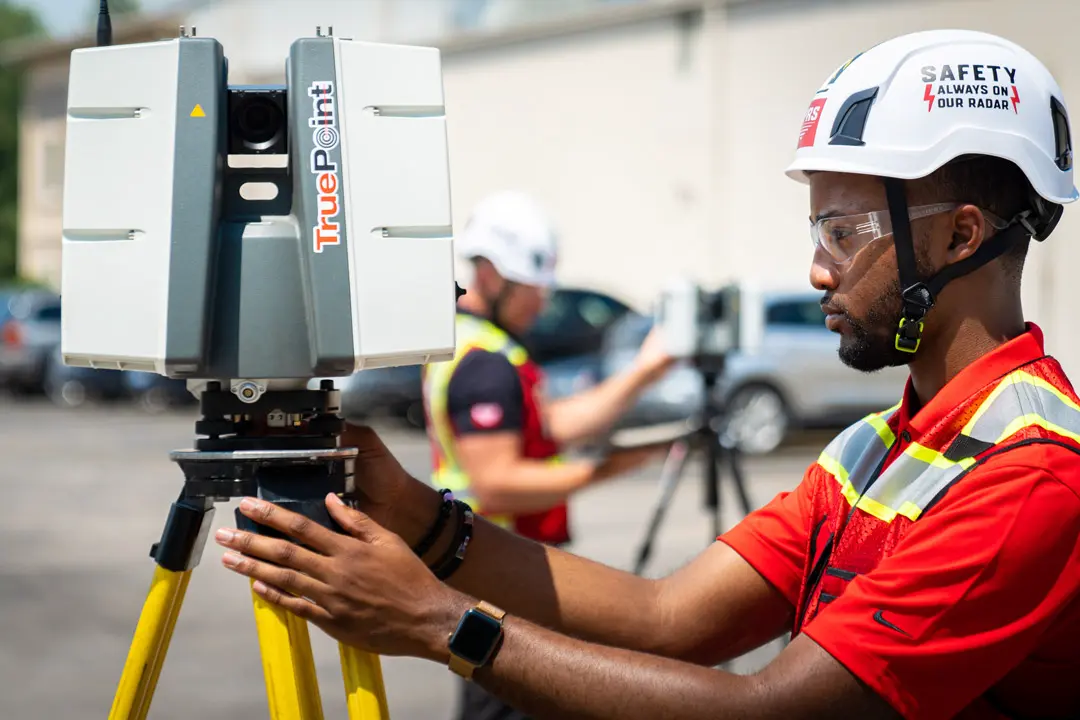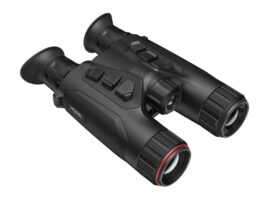Understanding the Concept of As-Built Laser Scanning
What is As Built Laser Scanning and How Does it Work?
As-built laser Scanning is a state-of-the-art technology utilized in the construction industry to capture accurate spatial data of existing structures. The process employs laser beams to collect multidimensional information, converting real-world spaces into precise digital 3D representations. As-built laser Scanning involves a high-performance laser scanner that emits rapid laser pulses, measuring the time it takes for the light to bounce back. This timing provides a triangulated distance measurement that, when aggregated, forms a dense point cloud – a detailed three-dimensional representation of the scanned environment.
Laser scanning successfully captures millions of points in a short time frame, ensuring high accuracy and eliminating the inconsistencies often found in traditional surveying methods. The resultant point cloud data can be processed using specialized software to create detailed models, enabling architects, engineers, and construction managers to visualize existing conditions and make informed decisions during the design and construction phases. As-Built Laser Scanning is particularly advantageous for renovations or projects involving pre-existing structures, as it minimizes guesswork and provides a reliable basis for future work.
The Evolution of Laser Scanning in the Construction Industry
The origins of laser scanning can be traced back to the early days of geographical surveying, where tools and instruments have evolved drastically over the decades. Initially, laser scanning technology was limited and innovative, and it was primarily used in industrial applications. However, in the past two decades, the construction industry has witnessed significant developments in laser scanning technologies, driven by advancements in optics, computing power, and software capabilities.
Initially, laser scanning was a costly endeavor, accessible only to large-scale projects due to the price of equipment and specialized expertise required. As technology has continued to evolve, the affordability and accessibility of laser scanning devices have improved, making them a staple in the construction toolkit. The integration of computer-aided design (CAD) software with laser scanning has further bridged the gap between the physical and digital worlds, allowing for the seamless integration of scanned data with design processes. Consequently, laser scanning is now transforming various dimensions of project management, from feasibility studies to post-construction evaluation, enabling professionals to work collaboratively with real-time data at their fingertips.
The Benefits of Accurate As-Built Data for Stakeholders
The advantages of acquiring precise As-Built data through AS-built laser scanning services extend across various stakeholders in the construction lifecycle, including architects, engineers, project managers, and clients. As-built laser scanning services provide unparalleled accuracy and detail, significantly enhancing project planning and execution. With a clear, detailed representation of the site, risks associated with unforeseen conditions, clashes, and deviations are greatly reduced.
Moreover, this enhanced accuracy fosters improved communication among project stakeholders. When everyone operates from the same set of verified data, misunderstandings are minimized, and decision-making becomes more efficient. As-Built data also serves as a valuable reference for maintenance and facility management, enabling stakeholders to track changes and modifications over the structure’s lifecycle. This documentation proves invaluable for future renovations or expansions, ultimately adding long-term value to the investment.
Diving Deep into the Technical Aspects
How High-Resolution 3D Models Are Created
Creating high-resolution 3D models through As Built Laser Scanning involves a meticulous process after data acquisition. Once the point cloud is captured, specialized software is utilized to process and refine the data. This may include filtering out noise, reducing redundancy, and organizing the point cloud data into manageable subsets.
The next phase involves converting the point cloud into a 3D mesh or surface model. This is achieved through techniques such as triangulation, where the point cloud is utilized to create interconnected facets to form a continuous surface. Textures and colors can further be applied to enhance visual clarity, providing not only a geometrically accurate model but also a realistic depiction of the scanned object or environment. The final product can be exported in various formats, allowing for integration into Building Information Modeling (BIM) systems and other design tools, fostering an immersive and interactive viewing experience that facilitates collaboration among stakeholders.
Technological Innovations Driving Laser Scanning Forward
The relentless advancement in technology is continually driving laser scanning forward, making it more efficient and user-friendly. Innovations include the advent of mobile laser scanning systems that allow teams to scan large areas while the scanner is in motion. This capability significantly reduces the time necessary for data collection while also retaining accuracy and offering more versatility in terms of the locations that can be surveyed.
Moreover, improvements in scanner resolution and speed have rendered this technology suitable for a wider variety of applications beyond traditional construction. The integration of drones equipped with laser scanners has opened new avenues for surveying hard-to-reach areas, such as rooftops or remote sites, making it more feasible for infrastructure projects. The synthesis of artificial intelligence in processing point cloud data is another groundbreaking development, allowing for the automated identification of features within a scanned environment, such as pipes, beams, and structural elements. These refinements present unprecedented opportunities to improve the overall efficiency of construction practices, reducing time and costs while enhancing accuracy and safety.
Comparing Traditional Surveying Techniques with Laser Scanning
Traditional surveying techniques, such as tape measurement and total station methods, have long been the mainstay in construction and civil engineering. These techniques rely heavily on manual calculations and physical measurements, making them time-consuming and susceptible to human error. While traditional surveying can yield satisfactory results for small projects, they often fall short in scenarios requiring extensive documentation and accuracy, especially in complex environments where intricate details are paramount.
In contrast, laser scanning provides a comprehensive solution that covers entire sites in a single capture, significantly enhancing productivity. The impressive density of data obtained from laser scans allows for precision measurements typically impossible with conventional methods. The ability to visualize large expanses of space in one cohesive model allows engineers and architects to detect clashes and optimize designs early in the project, avoiding costly rework and delays. A significant difference also lies in the historical record that laser scanning can preserve: point clouds and 3D models serve as valuable assets for future inspections, renovations, and compliance with regulations, ensuring longevity in documentation not achieved through traditional means.
Real-World Applications and Case Studies
Transforming Infrastructure Projects: Success Stories
Numerous successful infrastructure projects have emerged, showcasing the transformative power of As-Built Laser Scanning. One notable example includes the renovation of iconic heritage structures, like historical bridges and monuments, where precise measurements are critical to maintaining integrity and design authenticity. By employing laser scanning, project teams created detailed 3D models that not only depicted accurate dimensions but also highlighted structural anomalies that required attention before renovation began.
In urban settings, cities around the world have employed laser scanning to support effective urban planning. For instance, a city in Europe utilized this technology to assess the spatial relationships and conditions of existing transportation infrastructure. City planners were able to visualize the integration of new transportation systems with historical assets and existing architecture, ensuring that development was sustainable while preserving the character of the community. Many of these projects have demonstrated that accurate As-Built data is indispensable in achieving a harmonious balance between the old and the new, making laser scanning a critical tool in promoting both innovation and preservation.
Integration with Building Information Modeling (BIM)
Integrating As-Built Laser Scanning with Building Information Modeling (BIM) revolutionizes the design and construction process. BIM relies on accurate and comprehensive datasets to create informative digital representations of a building’s physical and functional features. Laser scanning provides the precise as-built conditions that are pivotal for successful BIM initiatives.
When laser-scanned data is imported into BIM, it enhances the understanding of existing conditions, allowing for informed decision-making and reducing discrepancies during the construction process. As built models derived from laser scans help identify potential issues early in the design phase and facilitate effective planning that considers realistic constraints and opportunities. For instance, mechanical, electrical, and plumbing (MEP) systems can be better incorporated into a design when the accurate physical elements of existing structures are considered. The synergy between BIM and laser scanning not only fosters efficiency but also enhances collaboration among project teams, resulting in improved outcomes and reduced waste over the lifecycle of construction projects.
How As Built Laser Scanning Improves Project Timelines
One of the most significant contributions of As-Built Laser Scanning in construction is its potential to drastically improve project timelines. The conventional methods of data collection can be time-intensive, often leading to extended project durations. By contrast, laser scanning provides rapid and accurate data collection, enabling project teams to kick off their projects with immediate access to reliable information.
Additionally, because of the precision of the captured data, rework and change orders stemming from measurement discrepancies are noticeably reduced. Stakeholders can confidently move forward with designs based on thorough analyses of the laser-scanned data. The time savings realized through the initial phases of design and planning often cascade through the entire construction timeline. Faster decision-making, reduced field rework, and optimized resource allocation introduce agile project management principles that contribute to faster overall project delivery. This incredible efficiency in construction activities has pervasive implications on cost and stakeholder satisfaction and reinforces the essential role of technology in contemporary construction practices.
Future Trends in Construction and Laser Scanning
The Role of Artificial Intelligence and Machine Learning
The integration of artificial intelligence (AI) and machine learning (ML) into the laser scanning process represents the forefront of innovation in construction technology. AI-driven algorithms can analyze vast amounts of point cloud data, identifying features, anomalies, and trends that may not be easily discernible to human analysts. This capability not only enhances the accuracy of predictions regarding potential issues but also streamlines workflows by automating various analytical tasks that once required substantial manual effort.
Moreover, AI and ML can enhance the modeling process by predicting project outcomes based on historical data, informing stakeholders of potential risks and facilitating better strategic planning. For instance, machine learning models can provide insights into optimal material selections, layout designs, and methodologies based on existing conditions, making project execution more efficient. As the construction industry increasingly embraces data-driven decision-making, the integration of AI and ML into laser scanning practices will undisputedly shape the future of construction, fostering an era of intelligent and responsive project management that optimizes performance and minimizes waste.
Emerging Technologies in Mapping and Imaging
In recent years, the construction industry has seen the emergence of a plethora of innovative mapping and imaging technologies that complement the capabilities of laser scanning. Among these advances is photogrammetry, a method that utilizes photographs taken from multiple angles to construct a 3D model of an object. While offering a cost-effective alternative for capturing less complex structures, photogrammetry serves as an invaluable supplementary technique when combined with laser scanning for comprehensive data collection.
Furthermore, advancements in drone technology have made it possible to conduct aerial laser scanning, providing a bird’s eye view of expansive areas – an essential capability for infrastructure assessments and large-scale construction sites. Drones equipped with advanced laser scanners can quickly capture site conditions that would otherwise be challenging to assess from the ground, improving efficiency and providing insights that inform decision-making.
As these technologies continue to evolve and intersect with traditional practices like laser scanning, the capacity to accurately capture and analyze three-dimensional environments will yield even more profound changes within the construction industry.
Preparing for a Laser-Scanned Future in Construction Projects
As the demand for accuracy and efficiency in construction projects continue to rise, stakeholders must proactively prepare for a future dominated by laser scanning technologies. This begins with investing in training and education for design and project management teams. As technology evolves, ensuring personnel is equipped with the necessary skills to harness advanced tools will maximize operational benefits and engagement across all stages of construction.
Organizations should also prioritize the integration of laser scanning into their workflows, allowing the technology to complement existing methodologies rather than serve as an isolated process. By cultivating a culture that embraces digital transformation, companies can leverage incentives through the use of accurate data and streamlined communication to foster competitive advantages. Furthermore, as sustainable practices become paramount in construction today, laser scanning provides invaluable data that can drive energy-efficient designs and reduce material waste, contributing to green building initiatives.
In conclusion, As Built Laser Scanning is revolutionizing construction projects by enhancing accuracy, efficiency, and collaboration across various stages from planning to execution. Embracing this technology marks a critical step toward achieving a high standard of quality and accountability within the industry, as it solidifies a more informed approach to building that adapts to technological advancements while prioritizing stakeholder satisfaction.











